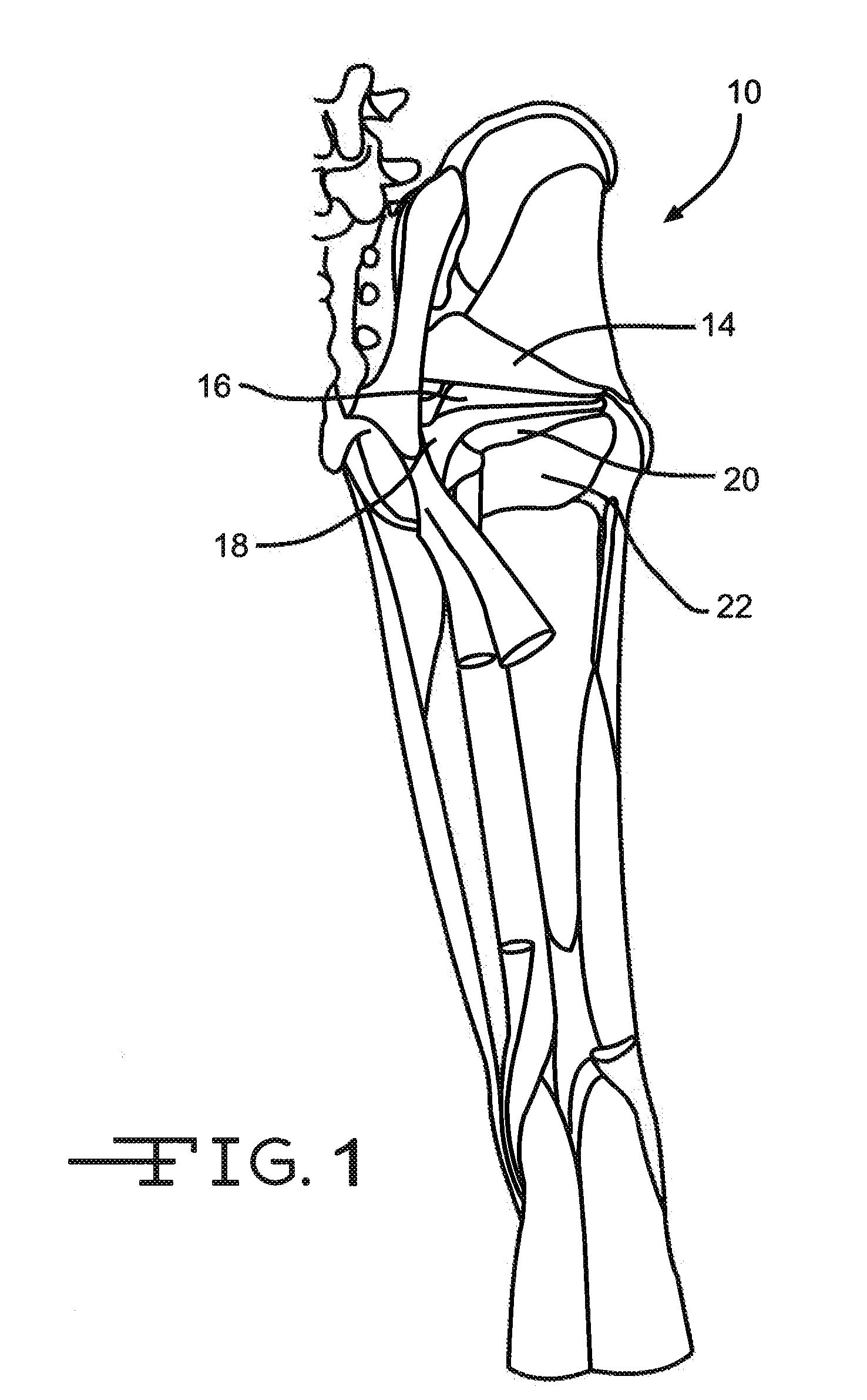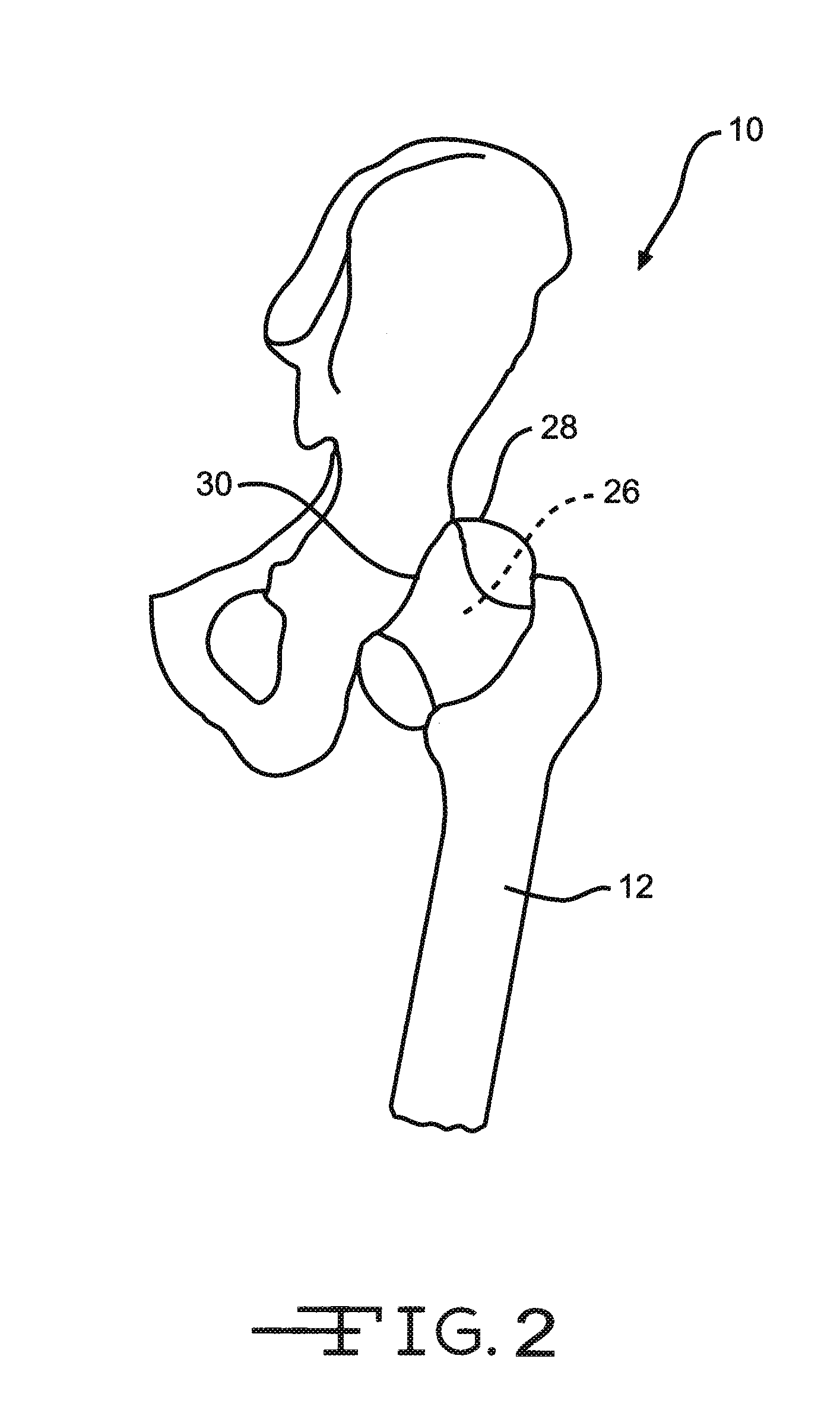Retractor Tool For Minimally Invasive Hip Replacement Surgery
- Summary
- Abstract
- Description
- Claims
- Application Information
AI Technical Summary
Benefits of technology
Problems solved by technology
Method used
Image
Examples
Embodiment Construction
[0036]Now turning to the figures, FIGS. 1-3 illustrate some features of the musculoskeletal anatomy, specifically the hip region 10 of a human. FIGS. 4-18 illustrate embodiments of orthopedic retractor tools of the present invention. As shown in FIGS. 1-3, there are several muscles that act to stabilize the femoral head of a femur bone 12 in the acetabulum (FIG. 2). These muscles include the short external rotator muscles (i.e., the piriformis 14, the superior gemellus 16, the obturator internus 18, the inferior gemellus 20, the obturator externus (not shown) and the quadratus femoris 22). The gluteus maximus (not shown) extends over these short external rotator muscles. The femoral head 26 is enclosed in a fibrous capsule 28, which attaches to the hip bone outside the acetabular lip 30 and to the base of the neck of the femoral head 26.
[0037]The MIS posterior hip replacement approach has traditionally involved first a skin incision, followed by an incision in the fascia lata, and t...
PUM
 Login to View More
Login to View More Abstract
Description
Claims
Application Information
 Login to View More
Login to View More - R&D
- Intellectual Property
- Life Sciences
- Materials
- Tech Scout
- Unparalleled Data Quality
- Higher Quality Content
- 60% Fewer Hallucinations
Browse by: Latest US Patents, China's latest patents, Technical Efficacy Thesaurus, Application Domain, Technology Topic, Popular Technical Reports.
© 2025 PatSnap. All rights reserved.Legal|Privacy policy|Modern Slavery Act Transparency Statement|Sitemap|About US| Contact US: help@patsnap.com



